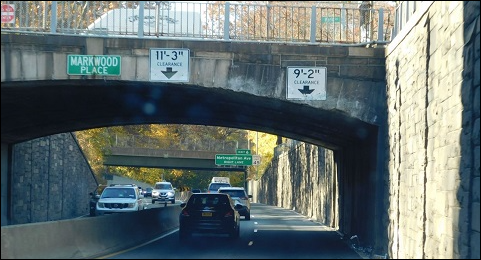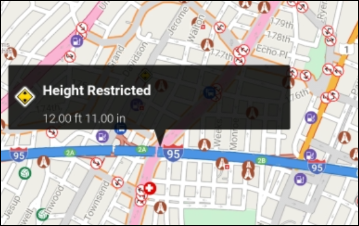Why does CoPilot avoid some bridges I know our trucks can clear?
CoPilot calculates routes using the legal and posted bridge heights provided by official state or federal sources. While the actual height clearance on many bridges may be higher than the posted sign indicates, the CoPilot algorithm prioritizes safety and cannot assume this because:
-
The difference between actual and posted clearance can vary significantly depending on the jurisdiction. What’s more, there are exceptions where an individual sign explicitly states "ACTUAL CLEARANCE."
-
The clearance may also vary depending on the lane used on a multi-lane road, and CoPilot cannot always accurately determine the lane a truck is in.

Example: Interstate 95 in New York
In New York, bridge height signs typically display a clearance that is one foot lower than the actual clearance. For example, a bridge with a 13'-11" actual clearance will usually have a sign that reads "12'-11" CLEARANCE." This is the case on I-95 East as it goes under the Cross Bronx Expressway.
Because of this legally posted sign, CoPilot’s data models this bridge as Height Restricted, 12'11".

As a result, CoPilot will not route a 13'6" truck through this underpass and will provide a route around it.
Contact us to learn more about MapExact, a web tool that allows you to make custom edits to your fleet’s CoPilot maps, including height restrictions.